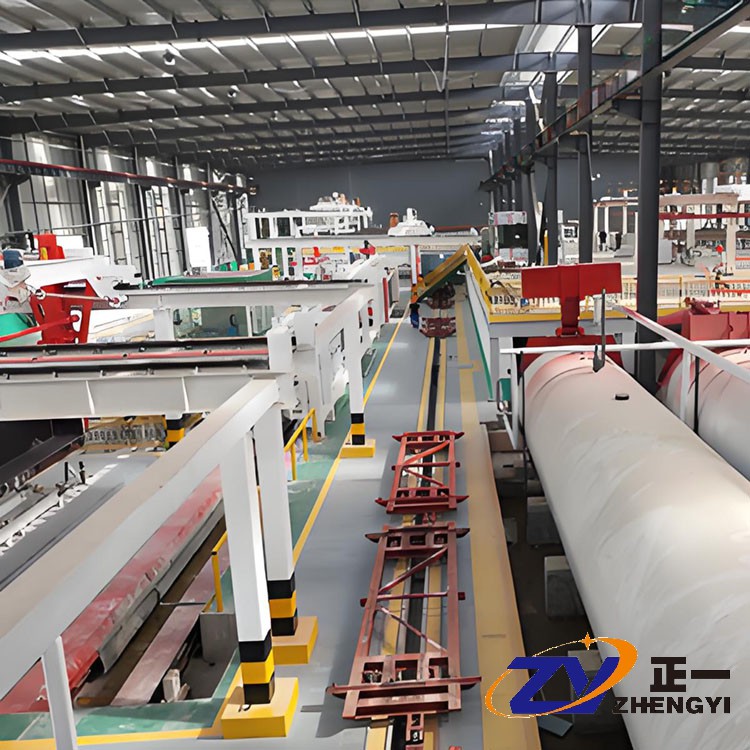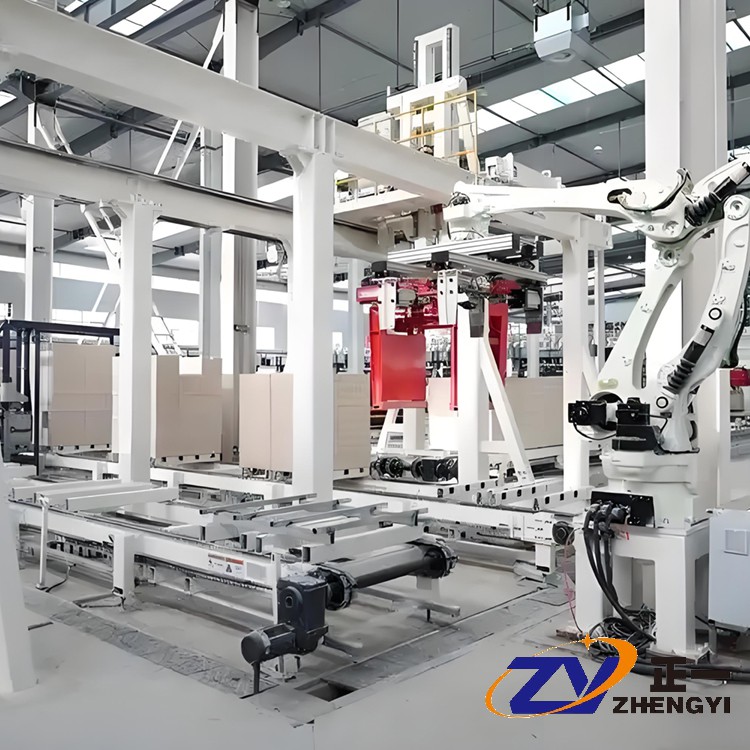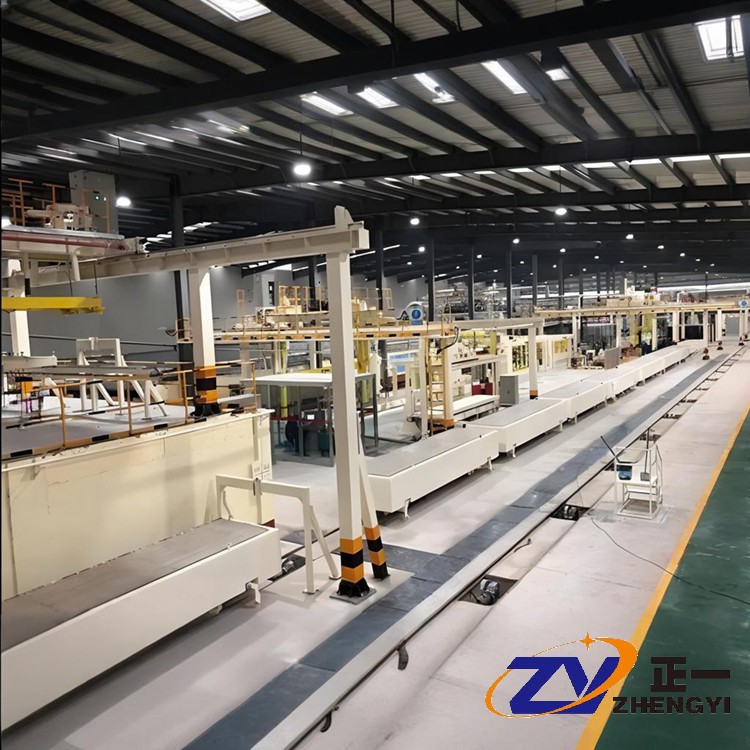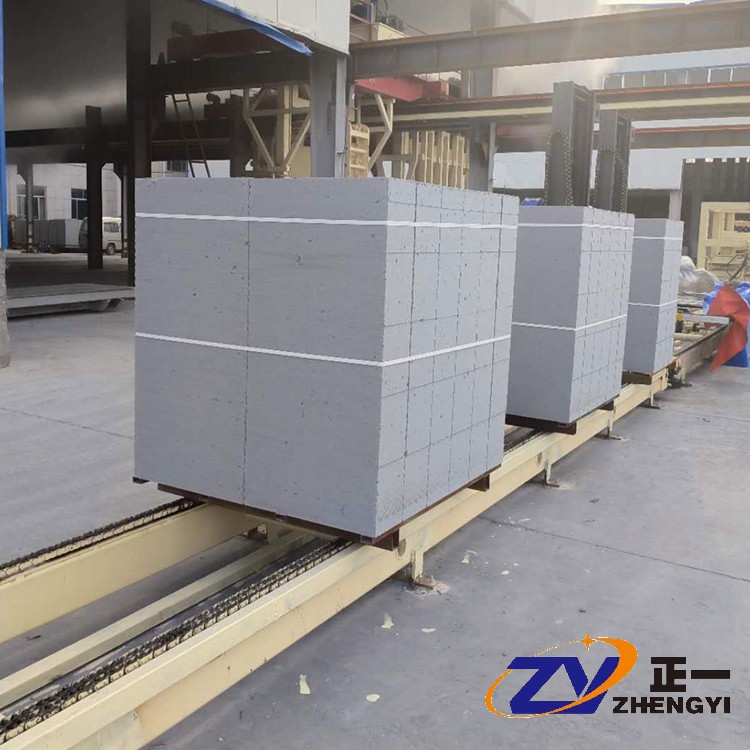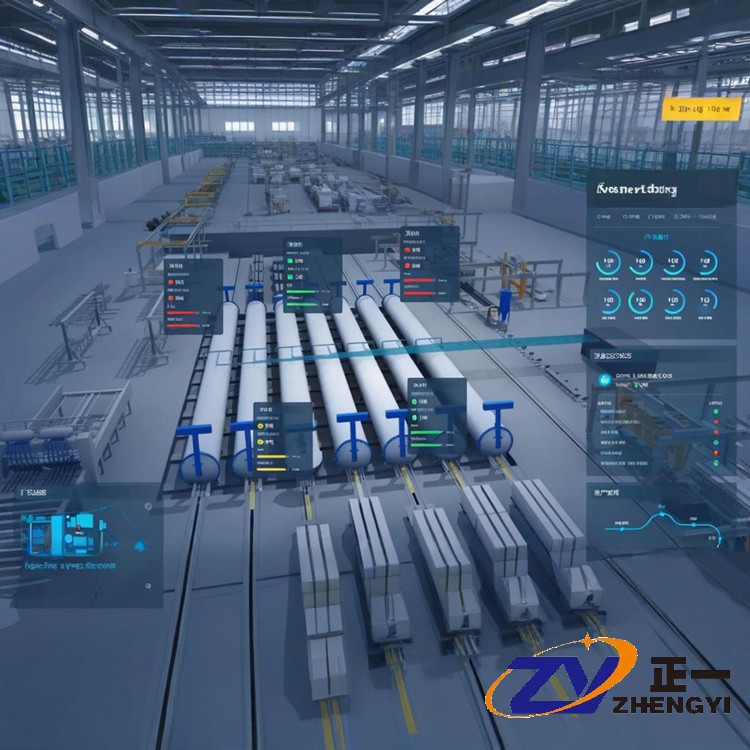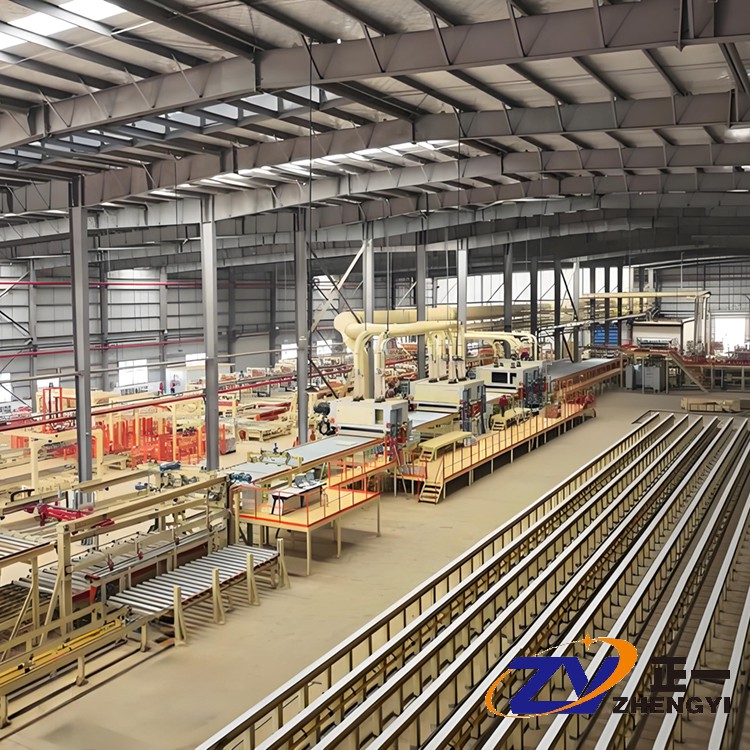定制化服务,满足您的独特需求!河南正一机械,根据您的生产规模和要求,量身打造专属的AAC加气混凝土砌块生产线设备!
Annual Production of 150,000 Cubic Meters of Autoclaved Aerated Concrete (AAC) Block Production Line
The production line with an annual capacity of 150,000 cubic meters of autoclaved aerated concrete (AAC) blocks is primarily used for manufacturing AAC blocks. These blocks, made from primary raw materials such as fly ash, gypsum, cement, and lime, undergo a series of processes to achieve qualities like light weight, high strength, thermal insulation, excellent fire resistance, environmental friendliness, and energy saving. They are widely recognized as green building materials in modern construction. The production line encompasses multiple sections, each equipped with specific machinery and serving distinct functions. Below is a detailed breakdown of the entire production line and its individual sections:

I. Overview of the Entire Production Line
The entire production line mainly consists of raw material processing, batching and mixing, pouring and molding, cutting and curing, and finished product delivery. Each section is closely interconnected, collectively completing the production process of AAC blocks.
II. Introduction to Each Section and Its Equipment
Raw Material Processing Section
This section is responsible for pretreating various raw materials to meet subsequent production requirements.
Equipment:
Crusher: Breaks down bulky raw materials like lime and gypsum to achieve the required particle size.
Ball Mill: Grinds the crushed raw materials to improve their reactivity.
Electromagnetic Vibrating Feeder: Dispenses raw materials quantitatively and continuously into subsequent equipment.
Belt Conveyor: Transports raw materials within the production line.
Batching and Mixing Section
This section is responsible for proportioning various raw materials according to a specific ratio and mixing them thoroughly to form a uniform slurry.
Equipment:
Batching Scale: Precisely weighs various raw materials.
Mixer: Mixes the weighed raw materials to form a uniform slurry.
Screw Conveyor: Transports the slurry to subsequent equipment.
Pouring and Molding Section
This section pours the well-mixed slurry into molds and applies appropriate vibration to remove bubbles and enhance product compactness.
Equipment:
Mold: Shapes the slurry into the desired block form.
Vibrating Table: Vibrates the slurry in the mold to remove bubbles and improve product compactness.
Pouring Machine: Dispenses the slurry quantitatively and continuously into the mold.
Cutting and Curing Section
This section is responsible for cutting the molded blocks and curing them to improve their strength and performance.
Equipment:
Cutting Machine: Cuts the molded blocks to meet product specification requirements.
Autoclave: Subjects the cut blocks to autoclaved curing to enhance their strength and performance.
Turning and Lifting Device: Removes blocks from the mold, turns them, and transports them.
Finished Product Delivery Section
This section is responsible for quality inspection and packaging of the cured blocks, which are then transported to the warehouse or sales location.
Equipment:
Quality Inspection Equipment: Such as vernier calipers and universal testing machines, used to inspect block quality.
Packaging Equipment: Such as plastic film packaging machines and pallets, used to package blocks to prevent moisture and deformation.
Conveying Equipment: Such as forklifts and conveyor belts, used to transport blocks from the curing area to the warehouse or sales location.
III. Production Line Process Flow
Raw Material Preparation and Storage:
Fly ash, gypsum, and other raw materials are collectively loaded into feed hoppers and stored in corresponding hoppers or bins.
Cement is stored in cement silos in bagged or bulk form.
Chemical raw materials and aluminum powder are separately stored in chemical warehouses and aluminum powder silos, respectively, and transported to the production workshop as needed.
Raw Material Processing:
Fly ash or sand is transported to the ball mill via electromagnetic vibrating feeder and belt conveyor for grinding into a slurry of the required concentration.
Lime is crushed by a jaw crusher, lifted by a bucket elevator to the lime storage bin, and then dispensed through a screw conveyor.
Chemical products are manually measured in proportion, made into a solution of the required concentration, and stored in storage tanks.
Aluminum powder is transported from the aluminum powder silo to the production workshop, measured, poured into the mixer, mixed with a specified amount of water to form an aluminum powder suspension.
Batching and Mixing:
The raw materials are accurately weighed using a batching scale to ensure consistency in raw material quality for each batch.
The weighed raw materials are fed into the mixer to form mortar. During mixing, an appropriate amount of water is added to ensure the mortar has the correct moisture content.
Pouring and Vibrating:
The prepared mortar is poured into block molds.
Simultaneously with pouring, the mold is vibrated to remove bubbles and enhance the compactness of the blocks.
Initial Curing and Cutting:
The poured blocks are propelled into the initial curing chamber by a conveyor chain for gas generation and initial setting. The temperature in the initial curing chamber is controlled within a certain range, and the curing time is determined based on process requirements.
Once the blocks have achieved the required cutting strength, they are cut using a cutting machine. Precision in cutting and accuracy in block dimensions are ensured during the process.
Autoclaved Curing:
The cut blocks undergo autoclaved curing in an autoclave. Parameters such as temperature, humidity, and pressure within the autoclave are controlled to ensure the quality of the blocks.
The curing time typically ranges from 8 to 12 hours, with the temperature controlled between 50°C and 70°C.
Finished Product Packaging and Warehousing:
The autoclaved blocks undergo quality inspection to ensure they meet relevant standards and requirements.
Qualified blocks are packaged, typically using plastic film to prevent moisture and deformation.
The packaged blocks are stored in inventory, awaiting sale or transportation to the construction site.
IV. Production Line Equipment Configuration
The main equipment of this production line includes:
Raw Material Processing System: Fly ash hopper, fly ash belt conveyor, lime hopper (vibrator), jaw crusher, bucket elevator, ball mill, etc.
Batching and Pouring System: Mixing and pouring machine, variable-frequency pouring ferry car, batching metering hopper, slurry screw conveyor, batching and pouring building, etc.
Cutting System: AAC block turning and lifting device, AAC block cutting machine, AAC block vacuum suction hood, etc.
Autoclaved Curing System: Autoclave, etc.
Automation Control System: Mold box automatic device, automatic cutting system, central control system, etc.
V. Characteristics and Advantages of the Production Line
High Efficiency and Energy Saving: The use of automation control systems and efficient equipment enhances production efficiency and conserves energy.
Environmental Protection and Energy Saving: Utilizes industrial waste such as fly ash as raw materials, facilitating resource utilization and reducing environmental pollution.
High Product Quality: Ensures stable and reliable product quality through precise control of processes such as batching, mixing, pouring, cutting, and autoclaved curing.
Flexibility: Can adjust product specifications and sizes based on market demand, satisfying customized needs of various clients.
VI. Investment and Benefit Analysis
Constructing a production line with an annual capacity of 200,000 cubic meters of AAC blocks requires investments in equipment purchases, site construction, installation, and commissioning fees. Specific investment amounts vary based on equipment selection, site conditions, production processes, and other factors. However, this production line boasts high production efficiency and product quality, yielding considerable economic and social benefits. By selling high-quality AAC blocks, enterprises can secure stable revenue streams and enhance market competitiveness.
III. Conclusion
The production line with an annual capacity of 200,000 cubic meters of autoclaved aerated concrete (AAC) blocks comprises multiple sections, including raw material processing, batching and mixing, pouring and molding, cutting and curing, and finished product delivery, each with specific equipment and functions. These equipment and functions work together to complete the production process of AAC blocks. Additionally, the design of the entire production line fully considers efficiency, energy saving, and environmental protection to ensure product quality and economic benefits for enterprises. In summary, the production line for 200,000 cubic meters of AAC blocks annually is an efficient and environmentally friendly building material production line with broad market and application prospects.
